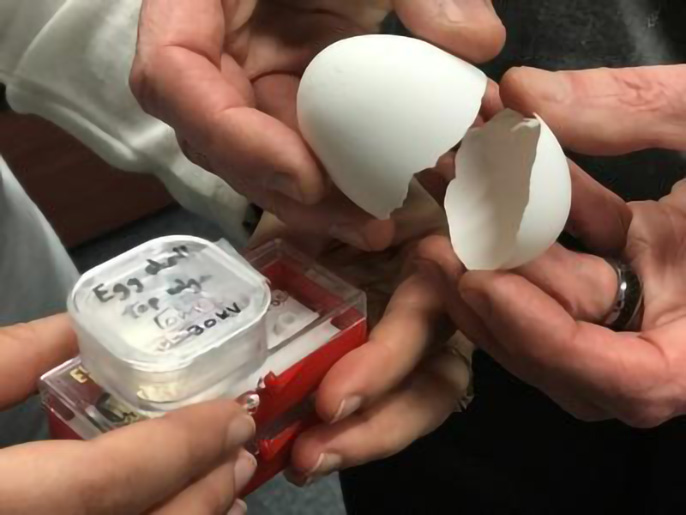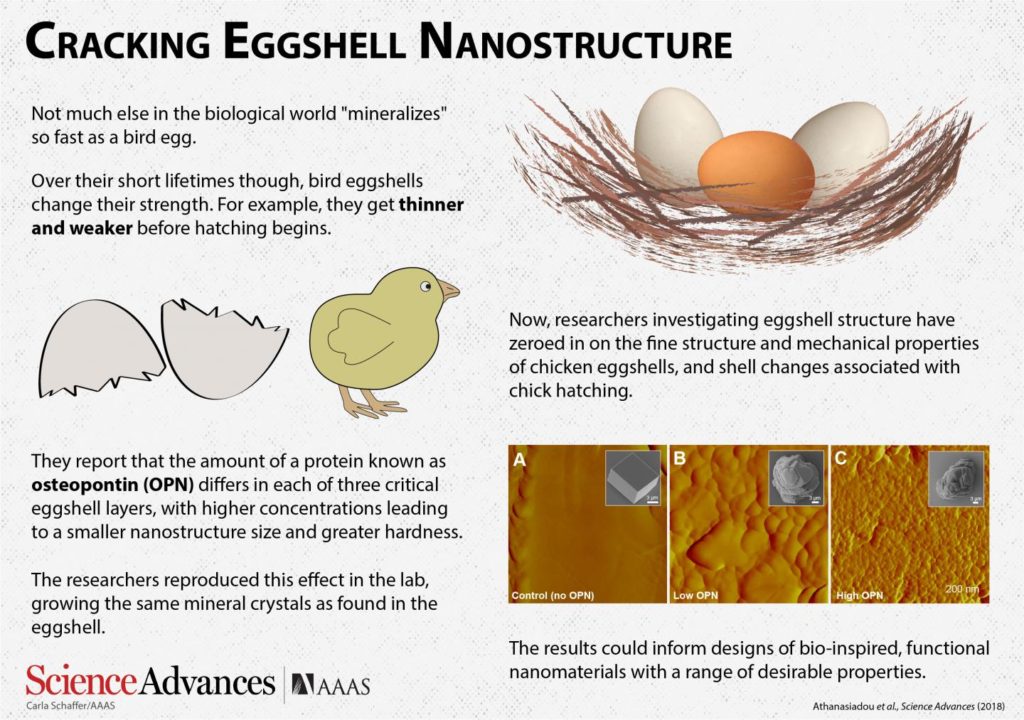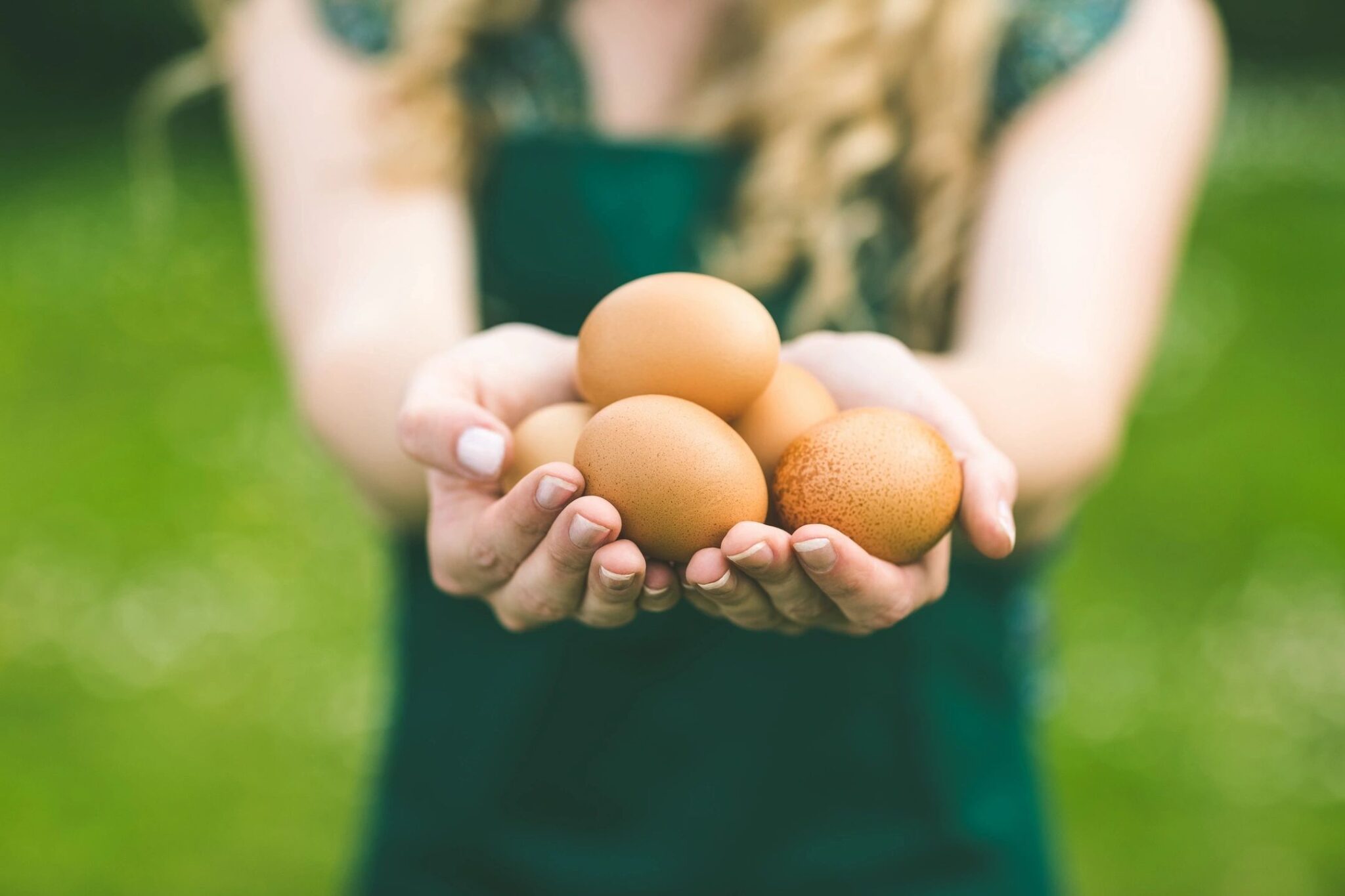For millions of years, birds have been evolving to make the perfect eggshell. But how are eggshells so strong?
By Kate Stone
Anyone who has a tried to squeeze a chicken egg from end to end knows that it is almost impossible to break that way. Eggshells are surprisingly strong. Not much in nature mineralizes as quickly as a bird egg. How is it that fertilized chicken eggs manage to resist fracture from the outside while, at the same time, can be broken open from the inside by a tiny chick? It’s all in the eggshell nanostructure, according to a new study led by McGill University scientists and published in the journal Science Advances.
For millions of years, birds have been evolving to make the perfect eggshell. The result is a thin, protective, biomineralized growth chamber that contains all the nutrients required for the development of a baby bird. The shell is not too strong, not too weak, and resists breaking until it’s time for hatching.

The perfect eggshell
To find out, a team of researchers from several different fields, including engineering and dentistry, took a very close look at the molecular nanostructure and mechanical properties of the incredible egg.
“Eggshells are notoriously difficult to study by traditional means, because they easily break when we try to make a thin slice for imaging by electron microscopy,” says Marc McKee of McGill University.
“Thanks to a new focused-ion beam sectioning system recently obtained by McGill’s Facility for Electron Microscopy Research, we were able to accurately and thinly cut the sample and image the interior of the shell.”
It turns out eggshells are made of both inorganic and organic matter. They contain calcium-containing minerals and abundant proteins. The amazing strength of eggs comes from a nanostructured mineral associated with osteopontin, a protein also found in composite biological materials such as our bones.

Inside eggshells
When first laid and during brooding, eggshells are hard enough to protect them from breakage. As the chick grows inside the egg, it needs calcium to form its bones. The growing chick gets that calcium from its shell. During egg incubation, the inner portion of the shell dissolves to provide this mineral ion supply while at the same time weakening the shell enough to be broken by the hatching baby bird.
In other experiments, the researchers were able to re-create a nanostructure similar to that which they discovered in eggshells by adding osteopontin to mineral crystals grown in the lab.
How strong are eggshells?
In a study published in the Journal of the Royal Society Interface, researchers measured the strength of a lot of different eggs. The eggs ranged in size from quail to ostrich. The results? Well, chicken eggs had a compressive strength of 100 pounds. Ostrich eggs were closer to an impressive 1,000 pounds.
RELATED: Carbon Isotope Anomaly in the Deep Sea
References
Athanasiadou, D., et al. (2018). Nanostructure, osteopontin, and mechanical properties of calcitic avian eggshell. Science Advances, (4), 3. DOI: 10.1126/sciadv.aar3219.
Hahn, E. N., et al. Nature’s technical ceramic: the avian eggshell, Journal of The Royal Society Interface (2017). DOI: 10.1098/rsif.2016.0804




